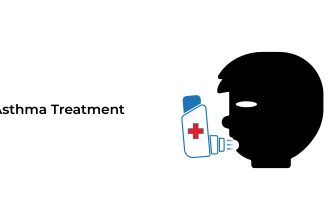Cold-induced asthma, also known as winter asthma, appears when the asthmatic person is exposed to dry air and cold; it worsens their condition. Cold-induced asthma increases the risk of asthma attacks.
The vulnerable group to cold-induced asthma are those who already have severe asthma. People who are susceptible to getting the flu or the common cold are at an increased risk because of the inflammation in the airways. A minor asthmatic person is also susceptible to cold-induced asthma. Every asthmatic person has different asthma.
Triggers of cold-induced asthma:
Two main factors or triggers are;
- Cold
- Dry air
Inhaling cold and dry air can cause airways to tighten. It can produce spasms and coughing, which result in an asthma attack.
Exercise can also be blamed, as we inhale through the mouth during the exercises.
Asthma flare-up triggers are;
- Sinus infections
- Allergies
- Pollen
- Breathing in chemicals
- Acid reflux
- Physical activities
- Bad weather
- Certain medications
- Certain foods and food additives
- Sharp perfumes
Symptoms of cold-induced asthma
Signs and symptoms of cold-induced asthma include;
- Chest pain
- Coughing
- Shortness of breath
- Feel tightness in the chest
- Wheezing
- Feeling nervous
Asthmatic exercise in the cold
Everyone wants to do exercise, even an asthmatic person. A healthy and strong body has the ability to defend against diseases. Asthma patients experience asthma attacks during exercise. They should be able to exercise with proper management and prevention. They could avoid the problem by doing yoga or by indoor exercise.
Exercise-induced bronchoconstriction (EIB) is a condition where airflow obstruction appears due to exercise.
Symptoms of EIB
- Coughing
- Wheezing
- Chest tightness
- Shortness of breath
Coughing is a common sign of exercise-induced asthma. Symptoms do not appear at the start; they usually appear during exercise and worsen after 5-10 minutes of stopping exercise. Symptoms resolve within 20 to 30 minutes and vary from mild to moderate.
Causes of EIB
During exercise, you breathe deeply and quickly due to the extra demand for oxygen in the body. Inhaling occurs from the mouth during exercise, which causes the air to be dryer and cooler. Dry and cold air is the primary trigger of exercise-induced asthma or bronchoconstriction. Symptoms worsen due to;
- High pollen counts
- Increased pollution level
- Exposure to other irritants or triggers, like smoke and strong fragrances.
- Cold asthma episodes
How to manage EIB?
Proper management is needed, which includes;
- Take steps to reduce the symptoms.
- Take medications before starting exercise.
- Before starting the exercise, do an appropriate warm-up for 5 to 10 minutes.
- See your respiratory status before, during, and after exercise.
A child with EIB;
Inform teachers and other coaches if the child is with EIB because a child with EIB needs medications before starting any activity.
Sports type for EIB people
Activities that trigger EIB;
- Activities or sports in cold/dry weather (ice skating, ice hockey, skiing, snowboarding)
- Constant activities that need no break (soccer, long-distance running)
Activities that are less likely to trigger EIB;
- Short bursts exercises (baseball, volleyball, gymnastics)
- Walking or biking
- Skimming in the warm environment
Medicines for EIB treatment
The following types of medicines are used to treat the EIB;
1. Short-acting beta-agonists
Short-acting beta-agonists should be taken 10 to 15 minutes before exercise. These medicines help to prevent symptoms for up to four hours.
These medications can reverse the symptoms of EIB.
2. Long-acting bronchodilators
Long-acting bronchodilators should be taken 30 to 35 minutes before activity or exercise. Salmeterol is a long-acting agonist that helps prevent the EIB symptoms for 12 hours. It doesn’t relieve the symptoms quickly.
3. Mast cell stabilizers
Nedocromil sodium or cromolyn sodium should be taken 10 to 20 minutes before any activity or especially exercise. These medicines help in preventing the late EIB symptoms. Some doctors prescribe these medications along with short-acting agonists.
The doses of these medications depend on the severity and frequency of the EIB.
Avoid doing exercise outdoors when the weather is freezy. Asthma is caused by the swell and narrowing of the airways. Breathing through the nose is easy for a healthy person, but an asthma patient takes abreath through the mouth due to more need for oxygen.
Breathing by mouth can dry the lining of bronchial tubes due to cold air. It can worsen the symptoms of asthma. When exposed to the trigger, symptoms worsen in asthma patients, like feeling trouble breathing, cold, coughing, and wheezing. Winter asthma is due to;
- Frosty temperature. Cold air disturbs the airways. Icey air narrows and swells the airways, causing asthma.
- Dry air. In winters, the air is mostly dry. Dry air in indoor areas is due to the warmed or busy furnace. Dry air irritates airways.
- Flu season. In the winter season, flu and cold viruses induce asthma. Asthma attacks occur due to respiratory infection.
- Indoor allergens. Indoor allergens trigger asthma-like pet dander, dust, mites, and tobacco smoke.
Activities do or don’t:
Sports or activities that trigger cold-induced asthma easily are;
- Soccer
- Basketball
- Field hockey
- Long-distance running
- Cross-country skiing
- Hockey
Sports that are not so much as likely to trigger asthma are;
- Swimming
- Walking
- Leisure biking
- Hiking
- Free downhill skiing
- Baseball
- Football
- Wrestling
- Golfing
- Gymnastic
- Short-distance running
Seven ways to tackle cold-induced asthma
Take the following steps to reduce cold-induced asthma;
1. Limit exposure
Limit the outside time. If your cough continues due to cold air hitting your lungs, avoid going outside.
2. Take medicines
It is essential to take asthma medicines in winter as prescribed. Inhale steroids that reduce inflammation and give relief from cold-induced asthma. Use these medications or steroids in winter especially.
3. Bundle up
Wrap your mouth and nose with a warm scarf, making the air a little friendly.
4. Add water
Place a humidifier in the bedroom that moisturizes the inner air in winters. Saline nasal sprays are also a good moisturizer for the nasal passageways.
5. Stay well
Avoid viral infections by staying away from infectious people. Try to wash your hands frequently to keep the germs away.
6. Adjust activities
For people with exercise-induced asthma or bronchodilators, when doing strenuous exercise, airways begin narrow and tend to be sensitive to the cold air. Try to do fewer activities when going to chilly areas.
7. Ask for help
If asthma did not control, ask for help from a health care provider. Health care providers or doctors can provide better options for reducing or improving asthma induced by cold.
References
- https://www.wwmedgroup.com/blog/what-is-cold-induced-asthma/
- https://www.medicalnewstoday.com/articles/325492
- https://www.aafa.org/exercise-induced-asthma/
- https://health.clevelandclinic.org/how-to-manage-winter-asthma/
- https://www.webmd.com/asthma/features/athletes-guide-exercise-induced-asthma





